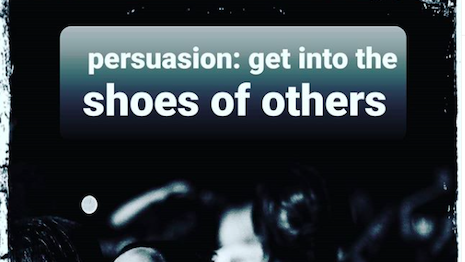 Working from home adds a level of complexity to the traditional form of storytelling to which consumers are accustomed
Working from home adds a level of complexity to the traditional form of storytelling to which consumers are accustomed
By Juliet Huck
Storytelling is a cornerstone of how humans communicate with one another. This is true across all aspects of life, both in interpersonal and business relationships.
Working from home adds a level of complexity to the traditional form of storytelling to which we are accustomed.
While facts and figures are important, and should absolutely be presented with your argument, you will also want your audience to emotionally connect with you, regardless if you are in person, on the phone or doing a video chat. The most impactful way to do this is through a narrative.
In fact, it was found that stories can be up to 22 times more memorable than facts alone, allowing your message to resonate with decision-makers on both intellectual and emotional levels, giving you an edge in your argument.
Breaking down persuasion through storytelling
We use persuasion every day, whether you are emailing a colleague, doing a video chat with decision makers, phoning your significant other about dinner plans, or texting your realtor to negotiate on a price.
We use persuasion in all forms of communication in both our personal lives and in business.
Persuasion is a focus of many interactions. In fact, as far back as Aristotle, communicators have been breaking down a formula for persuasion.
Aristotle noted five aspects of persuasion, all of which will take your storytelling to the next level:
Ethos. The character or credibility of the speaker. As a storyteller, you will want to set up why you are an expert in the subject matter, including your personal experiences and background.
Logos. The reason, or logical appeal. These are the facts and figures that backup and support your story. While the narrative is important, you still will want to include these important aspects of your argument.
Pathos. The emotion or connection that you want others to feel. This is the purpose of the narrative or the story, itself, and where the majority of your focus should be spent to establish a strong emotional connection for your audience.
Metaphor. This can be an incredibly useful device in your storytelling. By comparing a situation to something relatable and easy to visualize, your story will gain another layer in its persuasion.
Brevity. Make sure your story establishes the needed connection, but be as brief as possible to hold your target's attention for the entire message. If they start to tune out, you will lose the impact of your story.
Stories that persuade
Storytelling is a persuasive addition to any business presentation.
While many think that business decisions are based on numbers, the truth is that most are made with emotion. What does that mean for business leaders, sales associates, marketing professionals and lawyers?
It means that those who base arguments solely on reason will fail at being persuasive, and those who make an emotional connection through storytelling will have a higher rate of success.
Persuasion methodology should be applied to storytelling, including audience research and uncovering pain points. You can see this throughout a variety of business communications, and it is easily spotted in marketing and branding.
Here are a couple examples of persuasive storytelling from brands’ and their commercials:
Budweiser: The U.S. brewer created this unique ad for their “Don’t Drink and Drive” campaign. It created a story about a man and his dog. The man goes out for an evening of beer drinking with his friends, while the dog waits at home.
Just when you think that the owner has met an unfortunate fate due to drinking and driving, he walks through the door and apologizes to the dog, explaining that he had to make a responsible decision.
Budweiser could have flashed scary statistics about drunken-driving deaths across the screen but took another approach.
This is just one story of responsibility, but it is more powerful than a barrage of statistics and facts about drinking and driving.
Tesla: A luxury car brand, Tesla would not have surprised anyone highlighting its sleek lines, leather interior and smart-car features. However, a big portion of Tesla’s brand is its use of electricity to power cars.
The brand embraced its sustainable message of clean energy and shared the story of one owner, John. Instead of talking about the pollution created by gas cars, they follow John on his commute to work and on vacation with his family.
The ad even notes that Tesla expanding its charging network to make travel easier, addressing a direct pain point of electric car users.
WHETHER YOU ARE pitching new business, introducing a new product, persuading a jury of your client’s peers, or using persuasion in other aspects of life, do not let the virtual form of your communication get in the way.
Storytelling can be a powerful tool when used correctly.
By establishing your credibility and connecting the facts and figures to a story that touches the decision maker’s emotions, you will be far more successful at persuading than by using a logistical argument alone.
As the number of people working from home grows, it is important to remember to weave stories into our online presentations.
Be sure to take full advantage of online tools such as video conferences and slideshows to create an immersive story for your target.
 Juliet Huck is founder of the Academy of Persuasion
Juliet Huck is founder of the Academy of Persuasion
Juliet Huck is Los Angeles-based founder of the Academy of Persuasion and author of The Equation of Persuasion. Reach her at [email protected].
